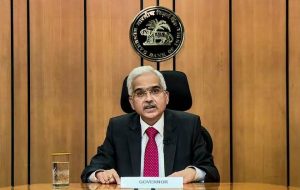13 Dec Repo rate remains unchanged at 4%, RBI following Accommodative stance (GS 3, Economics, The Hindu, Indian Express, RBI)
Repo rate remains unchanged at 4%, RBI following Accommodative stance (GS 3, Economics, The Hindu, Indian Express, RBI)- Today Current Affairs
News/Context : Based on assessment of the macroeconomics conditions and outlook, the Monetary Policy Committee of RBI voted unanimously to keep policy rate status quo and to retain the Accommodative Policy stance by a majority of 5 to 1.
The policy repo rate consequently will remain unchanged at 4% and RBI will follow the accommodative stance as long as required to revive and sustain economic growth.
It is noted here that the monetary policy Committee of RBI comprises 6 members in total ,three are the representatives of RBI including the RBI Governor and three represents the central government and decisions are taken on the basis of majority, with the RBI Governor having casting vote in case of a tie.
The RBI is of the view that there must be enough liquidity in the economy to recover from the impact of COVID-19 while ensuring the inflation remains within the target that is 4% +/- 2% band (i.e. 2 to 6%) with respect to Consumer Price Index (CPI) inflation. It is to understand here that generally in any economy if money in circulation is increased, it can increase the aggregate demand in the economy as ultimately people will be getting that increased money in circulation (either from the government or banking system) and will be buying things and thus increasing the aggregate demand.
The repo rate is kept at 4% as CPI inflation for the month of October was 4.48%.The repo rate (also termed as policy rate, benchmark policy rate or simply interest rate of RBI) is the interest rate at which RBI gives short term loans to banks and its other clients. If this rate is kept as low (say less than current rate of 4%), the banking system could be taking more loans from the RBI (as loan for banks became cheap), money in circulation will increase, which increases aggregate demand and as demand increases, prices also increases, which normally results in demand pull inflation and CPI- Combined can go higher than the permissible upper limit of 6%.
Thus it is understood here that by keeping the repo rate towards the lower side, better growth can be achieved to recover the economy (from COVID 19 slowdown or any general recession), but at the same time inflation can also take place. The RBI monetary policy stance will always be to achieve a balance between growth and inflation, or say growth as much as possible keeping the inflation within the permissible limit ( best if CPI- Combined inflation moves around 4%, which is also termed as moderate inflation).
This time RBI has kept repo rate as 4% as it is already towards lower side (because it was kept as more than 6% during 2018 and more than 5% during 2019) and thus will be following accommodative policy stance basically to push for fast recovery and growth in backdrop of Covid19 slowdown.
Accommodative monetary policy, also known as loose credit or easy or cheap monetary policy, occurs when a central bank (such as RBI or Federal Reserve) attempts to expand the overall money supply to boost the economy when growth is slowing (as measured by GDP). The policy is implemented to allow the money supply to rise in line with national income and the demand for money.
The other rates like Marginal Standing Facility (MSF) and bank rate remain unchanged at 4.25%. MSF is the interest rate at which RBI gives loans only to Schedule Commercial Banks even if they don’t have government securities (G-secs) to keep as collateral with RBI. Schedule Commercial Banks can use the G-secs kept in Statutory Liquidity ratio, which is not supposed to be used in general circumstances. Here it is to note that banks are required to keep some statutory reserves intact, which means this much money cannot be used in giving loans.The two statutory reserves are Cash Reserve Ratio (CRR) and Statutory Liquidity ratio (SLR).
Here we mention all information about Repo rate remains unchanged at 4%, RBI following Accommodative stance The Hindu Analysis.
Md Layeeque Azam, Economics Faculty
Download plutus ias daily current affairs 13 December 2021
Plutus IAS Current Affairs Team Member




No Comments